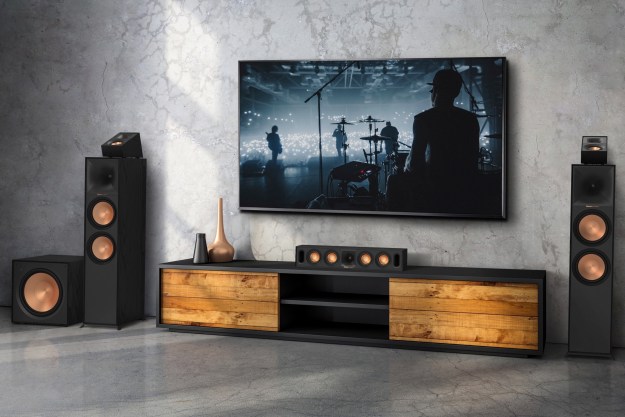“Klipsch strikes a winning balance with the Image S4...”
- Affordable price; solid bass; good build quality; comfortable
- Initially difficult to put in
Summary
Somewhere between the chintzy OEM earbuds that came with your last MP3 player, and a $400 pair of Ultimate Ears, lies the venerable midrange category. It seems to be growing like a wildfire lately, as existing PMP (portable media player) owners figure out that their players sound 100 percent better with a pair of earphones that weren’t manufactured for 17 cents somewhere in China, but don’t want to spend more than the price of the player on an upgrade. Klipsch’s $80 Image S4 headphones are an outgrowth of that swelling interest in audiophile quality on a budget, stepping quality down a notch from its previous efforts to a price any PMP owner can afford. Are they worth it, or do you get what you pay for? We popped them in to find out.
Testing and Performance
As you would expect from a pair of earbuds in this price range, Klipsch has gone a bit beyond your basic bubble packaging for the Image S4 and its accessories. The headphones come in a Altoid-sized tin with a layer of punched-out foam inside, creating pockets for the buds, three spare gel tips, and a tiny pick for cleaning the tiny hole in the gel tips. Besides making a nice impression when you first unbox them, the aluminum tin makes a handy way to carry them around without constantly having to unravel them from the nest of cables that builds in a backpack.

The slight kink between driver and silicon tip makes it a little unclear just how they should slide into your ear, but when you hit the right angle, the firm fit might as well be a “click” into place – they feel just right. After a dozen times putting them in, we didn’t even think twice about the process, but lending them out may produce some confused friends until you explain the proper way to fit them in.
And when they’re in, they’re not going anywhere. Though the bounce and jostle of the cable during runs sometimes necessitated reseating them during a long run, they never completely worked themselves free, needing only to be pressed back in a little tighter. Seated at a desk, not even that problem cropped up.

Conclusion
The road to audiophilia gets a little less steep, treacherous and hazardous to the wallet with Klipsch’s Image S4 headphones. For casual music listeners who can’t quite justify a pair of cans that cost five times as much as the player they’ll be wired into, Klipsch strikes a winning balance with the Image S4.
Editors' Recommendations
- Klipsch teases its new Onkyo-powered Flexus soundbar system at CES 2024
- New Klipsch tabletop wireless speakers are a more affordable, capable take on mid-century modern
- Klipsch’s new Reference Premiere subwoofers kick some serious bass
- Klipsch follows the success of The Fives with The Sevens and Nines powered speakers
- Klipsch and Ear Micro’s custom wireless earbuds are wildly expensive at up to $5,000


